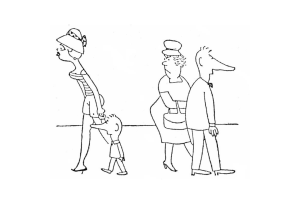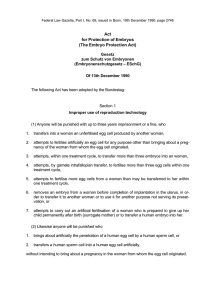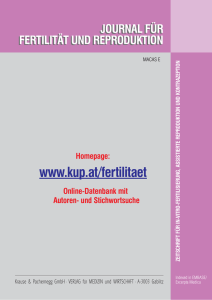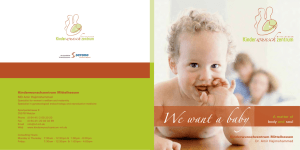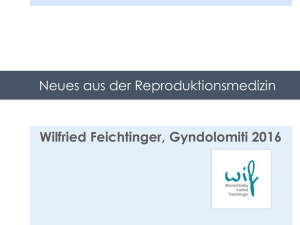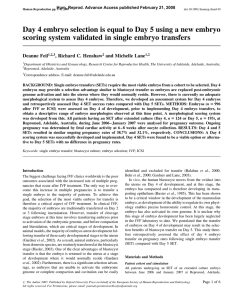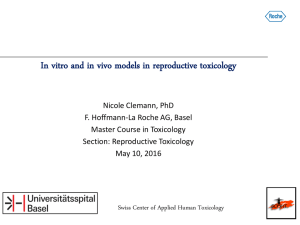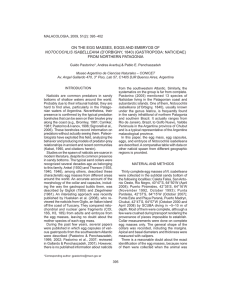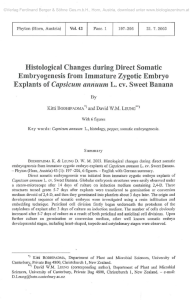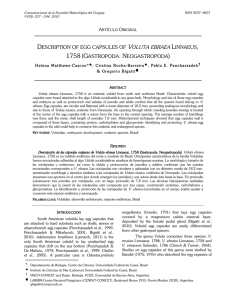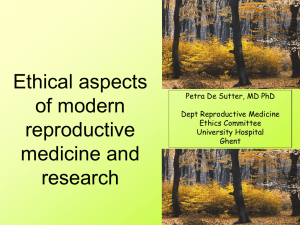Wanting A Baby - We help you achieve personal happiness
Werbung
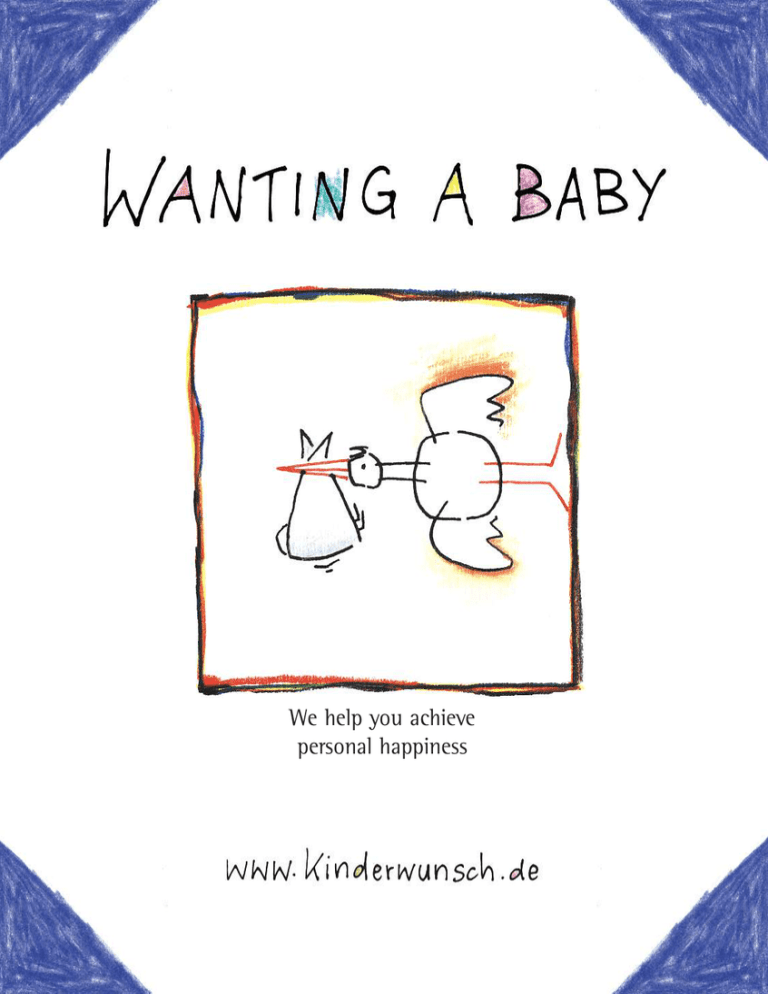
We help you achieve personal happiness Welcome from your “Wanting a baby” team You have reached us on your doctor’s recommendation because your wish to have your own baby has not yet been fulfilled. We are a team of doctors, laboratory technicians and medical assistants specialised in the treatment of infertility. To help couples wanting a baby, we use investigations and treatment methods in line with state-of-the-art scientific knowledge. Our treatment has been successful for many couples who even just a few years ago would have had to come to terms with remaining childless. But, despite great medical advances in the methods used, we can never guarantee success. A child, a new life, is always a gift. Before you decide in favour of treatment with us, you should be fully informed. In the course of personal discussions when we get to know you and you get to know us, we will look at all the questions that concern you at the moment and try to be of assistance as you make your decision. We recommend that you and your partner read this booklet together as it provides an overview of all the information that you need to know at this time. Looking forward to working with you, Your “Wanting a baby” team 2 Inhalt 1. A word about you wanting a baby 2. Human reproduction 3. Infertility – possible causes 4. Medications – and what they do 5. Methods of assisted reproduction 4 Childless but don’t want to be – why us? Is it my fault? Is it yours? What we can do to help you What are the chances of becoming pregnant? Clomiphene Pure recombinant follicle stimulating hormone (FSH) Human menopausal gonadotrophin (hMG) GnRH analogues: • GnRH antagonists • GnRH agonists Human chorionic gonadotrophin (hCG) Progesterone 5.1 An overview of the procedure Insemination In-vitro fertilisation (IVF) Intracytoplasmic sperm injection (ICSI) Gamete intrafallopian transfer (GIFT) Assisted hatching Cryopreservation of eggs Microsurgical epididymal sperm aspiration (MESA) Testicular biopsy/testicular sperm extraction (TESE) 7 10 13 16 16 20 5.2 IVF treatment – what we do First step Promotion of egg maturation (ovarian stimulation) Second step Monitoring egg maturation Third step Inducing ovulation Fourth step Operation to retrieve cells (ultrasound guided aspiration) Fifth step Sperm collection and preparation Sixth step Fertilisation of the retrieved eggs and embryo culture Seventh step Transfer of embryo(s) 6. Risks and chances of IVF treatment 25 7. Important recommendations for your IVF treatment 29 8. Legal aspects of IVF treatment 34 9. Glossary 36 1. A word about you wanting a baby Childless but don’t want to be – why us? You are not the only couple to be asking themselves this question, you are one of many. Did you know that in Germany today about every seventh partnership is childless yet does not want to be? And that the number of couples in the same situation as you is steadily increasing? A couple is considered to be infertile if they have failed to achieve a pregnancy within a year despite the wish for a baby and regular unprotected sexual intercourse. Is it my fault? Is it yours? Infertility or undesired childlessness is a problem that always affects both partners. There are many possible reasons: organic causes but also psychological, professional and social reasons, the age of the woman, lifestyle, diet, smoking, alcohol consumption and environmental factors all have an effect on fertility. Organic causes for infertility are diagnosed in the man (about 40%) just as often as in the woman (about 40%) or may be found in both partners (about 30%). We are unable to find a cause for the infertility in only approximately 10% of childless couples who want a baby. Even if we determine that the reason lies with the man, the woman also has to be treated in most cases. 4 What we can do to help you First of all we perform investigations so that we can make a definite diagnosis. Because there are so many different reasons for infertility, the investigations (which are always carried out in both partners) may take some time. Once we have fully identified the underlying cause(s), we work out an individual treatment plan based on your diagnosis. We will then discuss this plan with you in detail, including the duration of treatment and the individual treatment steps. What are the chances of becoming pregnant? In an international statistical analysis of all IVF centres, the pregnancy rate after embryo transfer is 20-25%. In comparison: a healthy couple, who have regular sexual intercourse within a cycle, have a maximum 20-30% chance of pregnancy. We will outline your chances of a successful pregnancy to the best of our ability: the nature and severity of the fertility problem as well as the age of the woman are factors that we always have to take into account when weighing up the individual chances. 5 6 2. Human reproduction Conception and pregnancy – something that seems so easy – is in fact an extremely delicate and highly complicated procedure. Hypothalamus GnRH Pituitary gland FSH What happens in the female reproductive cycle? Hormones produced in the midbrain (hypothalamus) and pituitary gland (hypophysis) of the woman ensure that once a month an egg matures in the ovaries to a stage where it is ready for fertilisation. The hypothalamus secretes gonadotrophin releasing hormone (GnRH) which stimulates the pituitary gland to release sex hormones – follicle stimulating hormone (FSH) and luteinising hormone (LH). FSH and LH then act on the ovaries: B In the first half of the cycle, FSH promotes the growth and development of usually just one follicle in which an egg matures. B LH induces ovulation in the second half of the cycle. LH 3 2 1 Production of the hormones FSH and LH by the pituitary gland: 1 stimulates the growth of a follicle and the maturation of the egg it contains 2 induces ovulation 3 supports the development and function of the corpus luteum. 7 First half of the cycle (approx. days 1-14) Under the influence of FSH the follicle grows and produces more estrogens [estradiol (E2)]. These estrogens build up the lining of the uterus (womb), open the cervix (neck of the uterus) by a few millimetres and ensure the production of cervical mucus necessary to facilitate the entry of sperm when the time comes. 1 Mid-cycle (approx. days 14-16) A rapid surge of LH, usually on the 12th to 14th day of the cycle induces the release of the egg (ovulation) the next day. The follicle ruptures, the egg which is now ready to be fertilised is picked up by the funnelshaped end of the fallopian tube. The remaining follicle develops into the corpus luteum which produces the hormone progesterone. Progesterone prepares the uterine lining (endometrium) for implantation of the fertilised egg and is responsible for maintaining the pregnancy. 2 8 Fallopian tube FSH Cervix Estradiol Follicle (with egg) Fallopian tube LH Cervix Ruptured follicle "hatching” Blastocyst (day 5) 16 cells and more (approx. day 4) 4 cells (approx. day 2) 4 3 2 6 5 Pronuclear stage (12-24 hours) 7 1 Implanted blastocyst (approx day 6) Implantation (approx day 6) Implanted embryo (blastocyst) 1. Corpus luteum 2. 1. Hormone signal: hCG 2. Corpus luteum hormone: progesterone Fertilisation The egg can now be fertilised in the fallopian tube (1). The basic requirement for fertilisation is the presence of sperm cells (spermatozoa) capable of fertilising the egg. These have to pass through the cervical mucus barrier, up through the uterine cavity and then along part of the fallopian tube, until one sperm penetrates the egg. There must be a sufficiently large number of sperm with a normal structure and good motility. Maternal and paternal genetic material merges, cell division begins and a new human life comes into existence. Movements intrinsic to the fallopian tube transport this early embryo towards the uterine cavity (2-5). It reaches the uterine cavity after five days and implants (6-7). Pregnancy begins. On the 6th-7th day following ovulation and fertilisation The embryo implants into the receptive lining of the uterus and starts to send out hormonal signals (in particular the pregnancy hormone ß-hCG), thus signalling the ovaries that implantation has occurred. The corpus luteum remains and produces the hormone progesterone which is responsible for maintaining the pregnancy. 9 3 4 3. Infertility – possible causes As mentioned earlier: we speak of infertility if you have been trying for a baby for at least a year and it hasn’t happened yet. We can diagnose and try to treat organic conditions that may be responsible for the infertility of one or both of you. In addition, we are ready to discuss with you any improvements you could make in external factors (job, lifestyle, diet, and environment) and how to overcome the situation psychologically and emotionally. Organic causes of infertility In the woman Hormonal disturbances in the hypothalamus, pituitary gland, thyroid gland, adrenal cortex or the ovaries – the egg does not mature properly In the man Disturbances or absence of testicular function, e.g. as the result of an infection such as mumps. This can result in too few or abnormal sperm. Malformation of the ovaries, fallopian tubes or uterus Malposition or obstruction of the spermatic cord Endometriosis: uterine lining tissue that grows outside the womb, e.g. in the fallopian tubes, ovaries or the bladder Bacterial contamination of the sperm Immunological infertility, that is to say, antibodies against egg or sperm cells Immunological infertility: antibodies against sperm cells Congenital causes, e.g. chromosomal abnormalities, in other words deviations from the normal structure or number of chromosomes 10 Undescended testicles or varicocoele (dilated veins around the testicle) Tumour surgery, e.g. for testicular cancer Congenital causes, e.g. chromosomal abnormalities Infertility treatment may be worthwhile for many of these causes. And what if we can’t find the cause? If the fallopian tubes are open, the sperm are good, regular ovulation occurs and you are both otherwise healthy? And you still haven’t been able to have a baby? Infertility treatment can still be worthwhile even then. 11 What requirements must you meet for IVF treatment? For the woman For the man If possible, you should be younger than 40 years old Requirement no. 1 is that you actually have sperm. If this is certain, further treatment depends on your sperm results: if these are very poor, intracytoplasmic sperm injection (ICSI) may be a possibility. More about this in chapter 5. Your infertility cannot be overcome by other means Your uterus and at least one ovary are able to function Tests show that you are protected from German measles You are HIV negative Before we look at the different procedures in more detail, some information on the drugs that are an important part of IVF treatment. 12 4. Medications – and what they do The medications that we use in IVF treatment all have a common task: either directly or indirectly they regulate the function of the ovaries! In the following we give you an overview of which type of drug regulates which hormone. Clomiphene Clomiphene is at the beginning of the chain: clomiphene acts on the hypothalamus to secrete more gonadotrophin releasing hormone (GnRH) which results in a clear increase of follicle stimulating hormone (FSH) and luteinising hormone (LH) from the pituitary gland. FSH stimulates the growth of the follicle in the ovary; LH induces ovulation and supports the second half of the cycle (luteal phase). The side effects of taking Clomiphene which have been reported in some cases are hot flushes, attacks of sweating, dizziness and visual disturbances. These side effects usually regress after stopping clomiphene. Taking clomiphene may occasionally lead to a twin pregnancy and very rarely to triplets. Close supervision of egg maturation, e.g. by ultrasound scanning, is important to prevent multiple pregnancies. Pure recombinant FSH FSH is the most important drug in IVF or ICSI treatment. In exactly the same way as FSH obtained from the pituitary gland, FSH produced by biotechnical methods stimulates the ovaries and leads to increased egg maturation. How the ovaries respond to this hormone depends on the dose and varies from person to person. Ovarian hyperstimulation may occur, especially in patients who have a tendency to produce many small follicles (polycystic ovaries). Multiple pregnancy also has to be reckoned with. Human menopausal gonadotrophin (hMG) The forerunner of pure recombinant FSH is human menopausal gonadotrophin (hMG), a mixture of urinary FSH and urinary LH, which is still used today to stimulate the ovaries. 13 GnRH analogues: GnRH antagonists GnRH antagonists have been available for stimulation treatment in Germany since 1999. GnRH antagonists prevent the premature surge of LH; after ovarian stimulation and egg maturation, ovulation can be induced to the day. That is to say, GnRH antagonists permit treatment to be managed on an individual basis and shorten the duration of treatment. GnRH antagonists are well tolerated. Localised reddening of the skin (redness with or without swelling) at the injection site has been reported in some cases, and occasionally headaches, nausea and dizziness. These side effects disappear once the drug is stopped. GnRH agonists Before GnRH antagonists became available, GnRH agonists were used in infertility treatment to regulate the pituitary gland – likewise to prevent premature ovulation and induce ovulation on a particular day. Because of the mechanism of action, treatment with GnRH agonists lasts longer than with GnRH antagonists and the side effects are the same as those that are typical of the menopause: hot flushes, dry mucus membranes, nervousness, loss of libido, depression, poor performance. These symptoms of an “artificial menopause” disappear completely within at most four weeks of the last dose of the drug. Human chorionic gonadotrophin (hCG) Human chorionic gonadotrophin (hCG) is the pregnancy hormone – the main hormone produced by the placenta. It is used in a different context in IVF treatment: to stimulate ovulation and maintain the luteal phase. 14 As the chemical structure of hCG is only very slightly different from that of LH, a dose of 5,000-10,000 units of hCG can mimic the natural LH surge and induce ovulation if there are large follicles. Ovulation can be expected about 40 hours after the last hCG injection. Progesterone Progesterone is the main hormone from the corpus luteum. It prepares the lining of the uterus for implantation of the embryo. In addition, it affects the immune system. As with many other medications, it has been shown that administering these medicines in the form of vaginal suppositories allows the optimal uptake of the active ingredients. 15 5. Methods of assisted reproduction Treatment of infertility is team work. Both of you, the doctors, our laboratory technicians and our assistants are all part of this team. Each member has his/her own tasks. 5.1 An overview of the procedure We have prepared an overview of the most important procedures of modern reproductive medicine for you: Fallopian tube Insemination At the time of ovulation, specially prepared "washed” sperm are transferred directly into the uterine cavity or fallopian tube with the aid of a syringe and a very thin catheter. Insemination is used for preference when there is moderate impairment of male fertility. Uterine cavity Cervix 16 IVF … stands for in vitro fertilisation. Since the birth of the first “test tube baby” in 1978, IVF has been constantly developed and refined. In this procedure, we stimulate the ovaries, remove mature eggs, and bring them together with your partner’s sperm outside your body. We then transfer the fertilised eggs or embryos into the uterine cavity (embryo transfer). See section on IVF treatment for details. Intracytoplasmic sperm injection (ICSI) ICSI is an additional measure which can be used as part of IVF when the man’s sperm quality is poor. Otherwise all steps up to retrieving the eggs are the same. For this purpose, the egg is held in position with a pipette. Under a special microscope, a single sperm is taken up into a fine injection pipette and placed directly in the egg. ICSI, also referred to as microinjection, thus mimics the natural process in which a sperm penetrates the egg. 17 Gamete intrafallopian transfer (GIFT) The retrieved eggs and the sperm are put into the fallopian tube. The eggs and sperm are kept separate from each other during the transfer and the actual fertilisation takes place in the fallopian tube. Assisted hatching During the early phase of embryonic development, the embryo is enveloped by a layer known as the zona pellucida. For successful implantation in the uterine lining to take place, the embryo has first to free itself from the surrounding zona pellucida: this process is referred to as “hatching”. To facilitate the embryo hatching, the zona pellucida can be “opened” somewhat with a laser, a process known as “assisted hatching”. Cryopreservation of eggs Frequently more eggs are fertilised than are allowed to be cultured further under the German embryo protection law (maximum of three). To store the “extra eggs” (referred to as impregnated eggs or pronuclear stage) we cryopreserve or deep freeze them. These eggs are thawed in later cycles, cultured on and transferred – in the usual way – to the uterine cavity in the embryo stage. This procedure is well proven and safe, and requires no further egg maturation or follicular aspiration. However, it does give a lower pregnancy rate than when using nonfrozen eggs. MESA … stands for microsurgical epididymal sperm aspiration. In this, we take sperm from the epididymus (which lies next to the testicle). In combination with ICSI, MESA offers a good therapeutic outlook. 18 MESA is worthwhile when there is inoperable closure of the spermatic cord, non-motile sperm in the sperm sample, or if there are ejaculation problems as a result of spinal cord injury or radical tumour surgery. Testicular biopsy/testicular sperm extraction (TESE) TESE is the abbreviation for testicular sperm extraction and means obtaining sperm for ICSI from a testicular biopsy. The testicular biopsy is firstly a diagnostic procedure when there is a very poor spermiogram, performed particularly to answer the question “What are the chances of success?” TESE also involves a testicular biopsy but here, as the name implies, the sperm are “extracted” from the testis for therapeutic purposes. We use TESE if MESA is not possible. In every case, TESE needs to be combined with ICSI. Urologists and gynaecologists work very closely together with MESA and TESE. All these procedures belong in the hands of experienced specialists. 19 5.2 IVF treatment – what we do Treatment consists of seven steps: First step Promotion of egg maturation (ovarian stimulation) In principle, IVF treatment is based on a natural spontaneous cycle. However, additional hormonal stimulation of the follicle and egg is worthwhile. Why? In a natural cycle, only one egg reaches maturity, which means a relatively slight chance for embryo transfer and pregnancy. Stimulation increases the chances in that we can encourage several follicles to grow, with the aim of retrieving several eggs. The older you are, the harder we try to obtain the maximum number of embryos permitted under the embryo protection law for the transfer. In this way your chances are greater that at least one embryo implants: Even so, this must always be balanced against the risk of multiple pregnancy. We use mainly the following for stimulation: 20 B Clomiphene alone, e.g. from day 5-9 of the cycle B Clomiphene followed by injections of (rec) FSH or hMG B (rec) FSH or hMG injections, e.g. from day 2 or 3 of the cycle B Combination of (rec) FSH or hMG stimulation with a GnRH agonist. Administration of a GnRH agonist is best started in the second half of the previous cycle (long protocol) or approximately at the same time as the FSH/hMG (short protocol) B Combination of (rec) FSH or hMG stimulation with a GnRH antagonist. This is not given until after the start of follicle stimulation – from about the 6th day of stimulation (antagonist protocol) Examples of treatment schedules Agonist protocol hCG Menstrual bleeding 36h 48-72h FSH stimulation Follicle aspiration GnRH agonist: depot or daily administration Day of cycle 22 Stimulation Embryo transfer 1 2 3 4 5 6 7 8 9 10 11 12 13 14 15 16 17 approx. 14 days Antagonist protocol hCG 36h 48-72h GnRH antagonist FSH stimulation Day of cycle Follicle aspiration Embryo transfer 1 2 3 4 5 6 7 8 9 10 11 12 13 14 15 16 These schedules are only examples. Of course we work out a treatment plan especially for you, which may differ from the above examples. Second step Monitoring egg maturation At the start of treatment we perform an ultrasound scan to see whether the ovaries and uterus are ready for the coming stimulation. We check the growing follicles during ovarian stimulation by ultrasound and blood testing to measure hormone levels [estradiol (E2) and possibly LH and progesterone]. In this way we determine the most favourable time to induce ovulation and retrieve mature eggs that are ready to be fertilised. 21 Third step Inducing ovulation Very rarely the LH surge leads to spontaneous ovulation. In all other cases, we induce ovulation by means of an hCG injection as soon as the results of the hormone tests and ultrasound scans indicate that the time is right. Ovulation would occur spontaneously about 40 hours after the injection and the follicle and egg be lost to further treatment. For this reason, we remove the eggs from the follicles (aspiration) after approximately 36 hours. If this causes disturbances of any nature we reserve the right to interrupt treatment. This is for your safety. Fourth step Operation to retrieve cells (ultrasound guided aspiration) The follicles are aspirated using an ultrasound technique. We give you a short light anaesthetic to make this surgical procedure easier for you. Fifth step Sperm collection and preparation Collecting sperm – easier said than done in many cases. It is completely understandable that you are concerned about it. Talk openly about the subject. You alone can decide where you want to masturbate – at home, in the laboratory or hotel room. The most important thing, however, is that the sperm you have collected reach our laboratory as soon as possible and free of germs. The motile sperm are freed from prostate secretions by several “washing” procedures and concentrated by a specially developed method (swim-up method). 22 Other methods of preparation and, of course, ICSI are possible if the sperm count or function is particularly poor. Sixth step Fertilisation of the retrieved eggs and embryo culture In the laboratory, we prepare sperm collected for IVF up to 4 hours after retrieving the eggs. After 2-6 hours, motile sperm are added to the eggs in culture fluid. Eggs and sperm remain in the incubator at 37°C for about 24 hours. After this time we check whether fertilisation has taken place (impregnation). If it has, then we can transfer the embryos into the uterine cavity after a further 24-48 hours. Of course, there may be variations in this timing depending on the individual circumstances. 23 Seventh step Transfer of embryo(s) If at least one vital embryo is present in the culture medium, this is taken up into a fine flexible catheter with a minute amount of culture medium and transferred to the uterine cavity. The transfer is usually painless. In a few cases it may be necessary to straighten out the uterus by holding it with a surgical instrument so that it is easier to insert the transfer catheter. It is your joint decision whether your partner will be present during the embryo transfer. IVF treatment summary: 1. Ovarian stimulation 2. Aspiration to retrieve eggs 3. Bringing the eggs and the sperm together 4. Pronuclear stage, monitoring under the microscope 5. Four-cell stage 6. Transfer of the embryos into the uterine cavity or intact fallopian tube Stimulated ovary 2 Uterine cavity Fallopian tube 1 approx. 24 h 6 24 male sperm female eggs 5 approx. 24 h 4 3 6. Risks and chances of IVF treatment Every intervention in the human body is associated with risks and chances – and IVF is no exception. You should know about these before you decide on treatment. An overview of the risks and chances The risks Follicle aspiration Each follicle aspiration is a surgical procedure that carries corresponding risks. You may be given an anaesthetic which also has its associated risks. Complications may arise with ultrasound guided aspiration, for example, injury of a neighbouring organ; however, this risk is extremely small. Multiple pregnancy Transfer of several embryos significantly increases the pregnancy rate. Even though not more than three embryos may be transferred in Germany, there is an increased likelihood of multiple pregnancy which cannot be predicted. The probability of having twins is up to 27%, and of triplets up to 4%. Tubal pregnancy Embryos may migrate – from the uterus into the fallopian tubes. Despite the embryos being correctly placed by the specialist, a tubal (ectopic) pregnancy may occur. Regular monitoring and immediate treatment minimise the risks of complications. Miscarriage 10-15% of all pregnancies in Germany end in miscarriage. With IVF, the figure is generally less than 20%, depending on the underlying problems. But one thing must be remembered: the average age of women who become pregnant through IVF is higher than “normal” pregnant women and the rate of miscarriage naturally increases with age. 25 Ovarian hyperstimulation syndrome (OHSS) The aim of stimulation is to retrieve several eggs. The more follicles that mature, the larger the ovaries become. Several follicles and enlarged ovaries are therefore completely normal with stimulation: this must be the case if the first step in IVF treatment is to be carried out successfully – maturation of several follicles. In association with hCG injections (to induce ovulation), this increased growth may lead to a condition known as ovarian hyperstimulation syndrome (OHSS). Symptoms are pain in the lower abdomen, increase in girth, nausea and irregular bowel motions. You should inform your doctor immediately if these symptoms occur. In a few cases, the enlargement of the ovaries is so great that a stay in hospital is necessary to improve monitoring and treatment. Pregnancy Of course, we don’t think of pregnancy as a risk of treatment in the strictest sense; when all is said and done you want a baby. Nevertheless, pregnancy may have complications. As with all pregnancies the risk of genetic or congenital defects or stillbirth cannot be completely ruled out. 26 The chances “What are our chances?” It is completely understandable that this question is your main concern. Two relevant statistics… Worldwide, the success rate of IVF treatment is taken as the pregnancy rate following embryo transfer, i.e. the answer to the question “How often does pregnancy occur after embryo transfer?” International comparisons of all IVF centres have given an average rate of 20-25%. In other words, every fourth to fifth embryo transfer results in pregnancy. With the number of attempts per patient the chances of becoming pregnant increase. And this brings us to the second figure which is of particular interest to you: after four IVF treatment cycles, the cumulative pregnancy rate is about 50-60%, i.e. after embryo transfer on four occasions more than one in two women are pregnant. What are the chances with ICSI? Some statistics here are also useful: almost irrespective of the initial spermiogram, embryo transfer can be performed in 95-98% of cycles. The pregnancy rate per embryo transfer is 20-30%, sometimes more. If treatment is repeated for several cycles, up to a maximum of four, the cumulative pregnancy rate per patient is about 60% – thus in fact higher than with “normal” IVF. One possible explanation for this is that “ICSI women” are on average younger than “IVF women”. 27 Pregnancy rate after IVF and ICSI % IVF 60 ICSI 50 Success range 40 30 20 10 with 1 embryo transfer with maximum 4 embryo transfers From these figures you can see that there is no guarantee of pregnancy. And it doesn’t always go as smoothly as both you and we would like. For example, the following may occur during IVF treatment: 28 B Even during the maturation of the egg, your body may react with an opposing hormonal drive. This treatment cycle then has to be cancelled. B The eggs are not fertilised by the sperm – a situation we can rectify in the next cycle by ICSI. 7. Important recommendations for your IVF treatment Non-medical aspects that make IVF possible are of prime importance to your infertility treatment. This means that you yourself, you as a couple and your relationship, together with your wishes, hopes, anxieties and doubts are all part and parcel of the process. IVF treatment is something very personal to you both. And that’s as it should be. Try to approach your treatment calmly and quietly; you will find that the more relaxed you are, the easier treatment will be for you. Our task (or to be more precise, the task of the team doctor responsible for your medical treatment) is to encourage and support you in this mental approach, working as a partner and always being ready to listen. Discussion is an important part of this. We will be putting very personal questions to you; these might be painful but are necessary to help clarify your approach by finding the answers for yourselves: B Which of you suffers most from your infertility? B What are your worries about treatment B What are your limits? B What do you think about adoption? B How do you envisage your life if you don’t have children? Whether it is a medical question or a personal one, your IVF team is always there for you. Don’t hesitate to ask about anything you want to know. And be prepared to let off steam if it’s all too much for you. If treatment becomes too stressful – let us know! Don’t force yourself to do anything. And don’t become an automaton! We know it’s easier said than done but don’t put yourself under pressure to succeed. It really doesn’t help – on the contrary, in fact. Take it easy but don’t give up! 29 The days following embryo transfer – and we can say this because we have many years’ experience with our IVF couples – will be a difficult time for you. You hope and you worry. Even though it may be extremely hard to do, try to remain calm and relaxed. You really can’t do anything better. And another thing, even if it sometimes gets difficult, don’t lose your spontaneity during IVF treatment. Don’t lose your sense of humour. Don’t just make love according to a timetable but also when you feel like it. The intervals between treatment cycles which are deliberately built in to your schedule (as a rule two to three months, sometimes even longer) are therefore extremely important. It is not worth going straight from one treatment cycle to the next. Your IVF doctor will explain why not. Time and again with so-called “soft” indications – where a pregnancy through the normal channels is not completely ruled out – we see a spontaneous pregnancy in this break. Pay special attention to keeping fit and a healthy lifestyle. In other words eat and do the right things during IVF treatment: B Eat plenty of fresh fruit, vegetables and salad in several small meals throughout the day instead of one large one – keep up a good appetite. B Get as much sleep as you need. B Take physical exercise that you enjoy – moderate but regular. B Build in a period of relaxation during the course of the day. B It is well proven that smoking adversely affects IVF treatment. Reduce the number of cigarettes you smoke now or better still, give up smoking altogether. 31 Self-help groups Would you like to share experiences with other childless couples? Then contact: Wunschkind e.V. Fehrbelliner Strasse 92 D-10119 Berlin Tel/fax: 0180/500 21 66 The telephone hotline is open every Tuesday from 7.00-9.00 p.m. for you to speak to someone directly. They will give advice and the addresses of selfhelp groups in your vicinity. At other times you can leave a message on the answering machine and someone will call you back. You can also access Wunschkind e.V. online: Homepage: www.wunschkind.de Email: [email protected] 32 33 8. Legal aspects of infertility treatment Embryo protection law The German embryo protection law is one of the most explicit and comprehensive laws concerning IVF treatment in the world. In the embryo protection law of 01.01.1991 the Federal Government laid down in detail the legal framework for reproductive medicine. If you are interested in reading the full text, please ask us for it. Guidelines for assisted reproduction Guidelines for assisted reproduction have been drawn up by the Medical Association and specify the conditions under which doctors may carry out assisted reproductive technology. You can find the current regulations on the website of the Federal Chamber of Physicians (www.bundesaerztekammer.de). Book V of the German Social Security Code (SGB V) The SGB V regulates the obligations of the health insurance companies to bear the costs for the treatment of diseases, including the treatment of fertility disorders. Guidelines of the Federal Committee of Physicians and Health Insurers on assisted reproductive technology These guidelines give the medical details of the prerequisites, nature and extent of treatment for infertility which will be covered by statutory health insurance. The legal basis of these guidelines is primarily to be found in § 27a of the SGB V. Latest news on the legal regulations can be found at www.kinderwunsch.de 34 35 9. Glossary We have compiled a list of the most important terms that frequently crop up in IVF treatment and other forms of artificial reproductive technology. Andrology study of male diseases Antibodies part of the body’s own defence mechanism Ascites fluid in the abdominal cavity e.g. with overstimulation of the ovaries Blastocyst advanced stage of cell division of the early embryo Cannula a fine injection needle Catheter thin tube for insertion into the body organs Cervical mucus mucus in the neck of the uterus Cervix neck of the uterus Chromosomes carriers of the genetic material Corpus luteum develops in the ovary from the ruptured follicle Cryopreservation deep freezing for storage Culture medium nutrient solution 36 Cyst fluid-filled cavity Diaphragm synthetic cap to block the cervix, also used for contraception Embryo the unborn child in the first 12 weeks Embryo transfer the transfer of an embryo into the uterus (ET) or the intact fallopian tube (EIFT); usually called tubal embryo transfer (TET) Endometriosis the occurrence of uterine lining tissue outside the uterus Endometrium lining of the uterus Estrogen typical female hormone, produced particularly in the follicle Extracorporeal fertilisation fertilisation of an egg outside the body (see in vitro fertilisation) Extrauterine outside the uterus Extrauterine pregnancy ectopic or tubal pregnancy Fertilisation fertilisation Fetus the unborn child after the 12th week of pregnancy Fimbria funnel-shaped open end of the fallopian tube which picks up the egg Follicle fluid-filled ovarian vesicle containing the egg Follicle aspiration removing the follicular fluid by suction to retrieve the egg cell FSH follicle stimulating hormone, promotes growth and development of the egg Gamete intrafallopian transfer (GIFT) introducing the egg and sperm cells into the fallopian tubes 37 Gametes germ cells (egg and sperm) GnRH gonadotrophin releasing hormone, stimulates the release of FSH and LH from the pituitary gland Gravidity pregnancy Hormone active substance occurring naturally in the body Hypophysis pituitary gland Hypothalamus gland with hormone control function, regulates the function of the pituitary gland ICSI intracytoplasmic sperm injection, injection of a sperm into an egg (microinsemination, microinjection) Idiopathic infertility unexplained infertility without any physical or mental cause being found Immune system the body’s defence mechanism 38 Immunological infertility infertility due to the production of antibodies by the body’s immune system Implantation implantation of the embryo into the uterine lining Induction injection hCG injection to induce ovulation Infertility inability to have a child, unwanted childlessness Insemination injecting the sperm into the uterine cavity or the fallopian tube In vitro fertilisation (IVF) “test tube” fertilisation / fertilisation outside the body (Latin: vitrum = glass) LH luteinising hormone MESA microsurgical epididymal sperm aspiration, obtaining sperm from the epididymis Ovary ovary Ovulation release of the egg from the follicle Placenta the afterbirth Polycystic ovaries (PCO) ovaries with multiple small cysts, usually associated with increased levels of male hormones Sperm antibodies substances which react against the sperm, produced as part of the body’s defence mechanism in the man or the woman Spermatozoa sperm Spermiogram analysis of sperm quality Spontaneous abortion miscarriage Stimulation promotion of follicle maturation, e.g. using hormones Surrogate motherhood pregnancy carried by another woman to whom the fertilised egg does not belong 39 40 TESE testicular sperm extraction, obtaining sperm from the testicle Transuterine through the uterus Tube fallopian tube Uterus womb Scientific information by Professor Christian J. Thaler o Organon GmbH . Mittenheimer Strasse 62 . D-85764 Oberschleissheim Phone 0 89 / 3 15 62 - 00 . Fax 0 89 / 3 15 62 - 218 www.kinderwunsch.de III-04-091 (1’/12.05 Zi) Head of the Division of Endocrinology and Reproductive Medicine Hospital and Out-patient Department for Obstetrics and Gynaecology Ludwig Maximilian University, Munich-Grosshadern D-81377 Munich Find more interesting information at www.kinderwunsch.de
